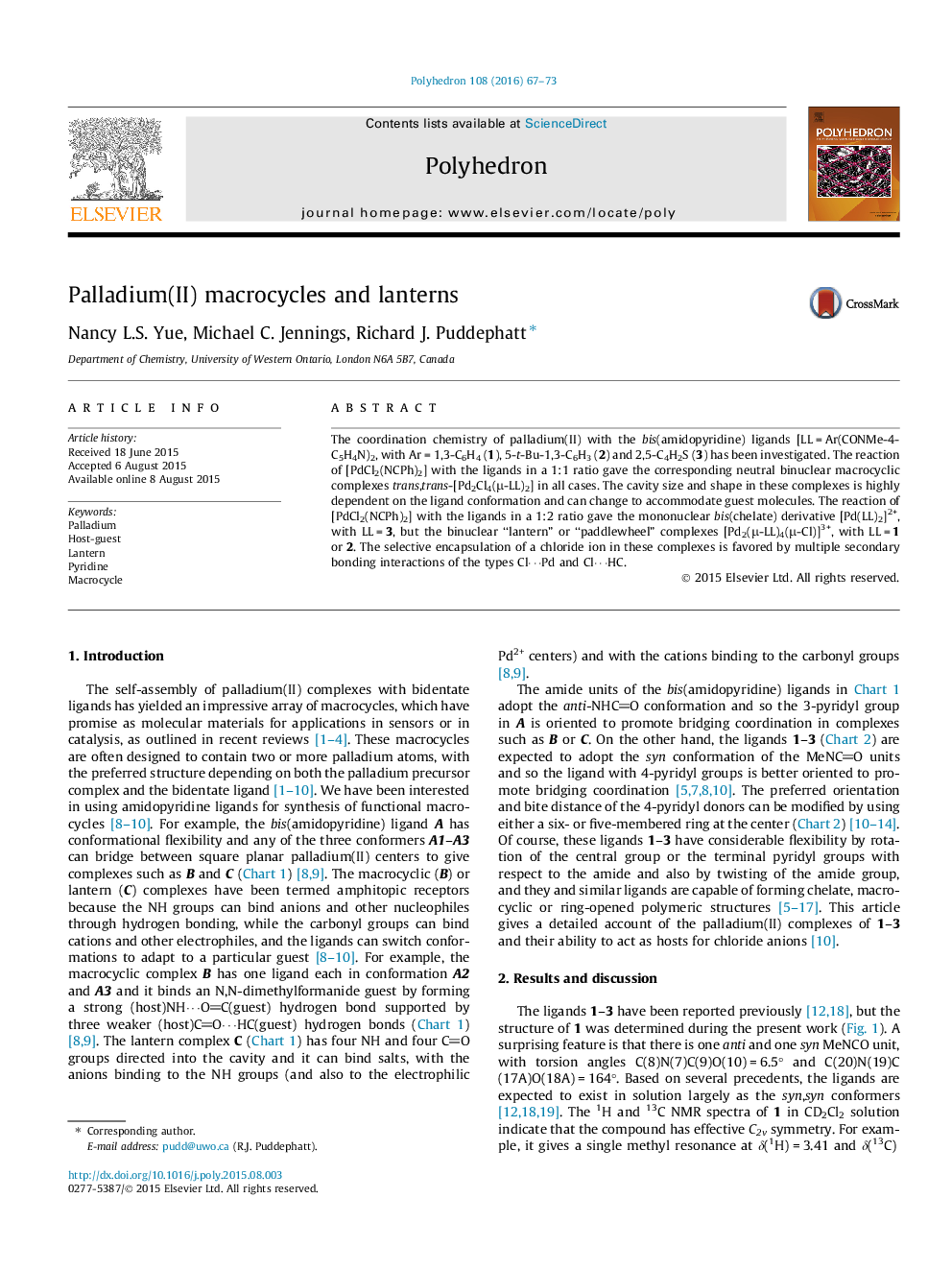| Article ID | Journal | Published Year | Pages | File Type |
|---|---|---|---|---|
| 1336543 | Polyhedron | 2016 | 7 Pages |
The coordination chemistry of palladium(II) with the bis(amidopyridine) ligands [LL = Ar(CONMe-4-C5H4N)2, with Ar = 1,3-C6H4 (1), 5-t-Bu-1,3-C6H3 (2) and 2,5-C4H2S (3) has been investigated. The reaction of [PdCl2(NCPh)2] with the ligands in a 1:1 ratio gave the corresponding neutral binuclear macrocyclic complexes trans,trans-[Pd2Cl4(μ-LL)2] in all cases. The cavity size and shape in these complexes is highly dependent on the ligand conformation and can change to accommodate guest molecules. The reaction of [PdCl2(NCPh)2] with the ligands in a 1:2 ratio gave the mononuclear bis(chelate) derivative [Pd(LL)2]2+, with LL = 3, but the binuclear “lantern” or “paddlewheel” complexes [Pd2(μ-LL)4(μ-Cl)]3+, with LL = 1 or 2. The selective encapsulation of a chloride ion in these complexes is favored by multiple secondary bonding interactions of the types Cl⋯Pd and Cl⋯HC.
Graphical abstractThe bis(N-methylamidopyridine) ligands are flexible and can act as chelating or bridging ligands, to form macrocycles or lantern complexes with varying transannular distances.Figure optionsDownload full-size imageDownload as PowerPoint slide
